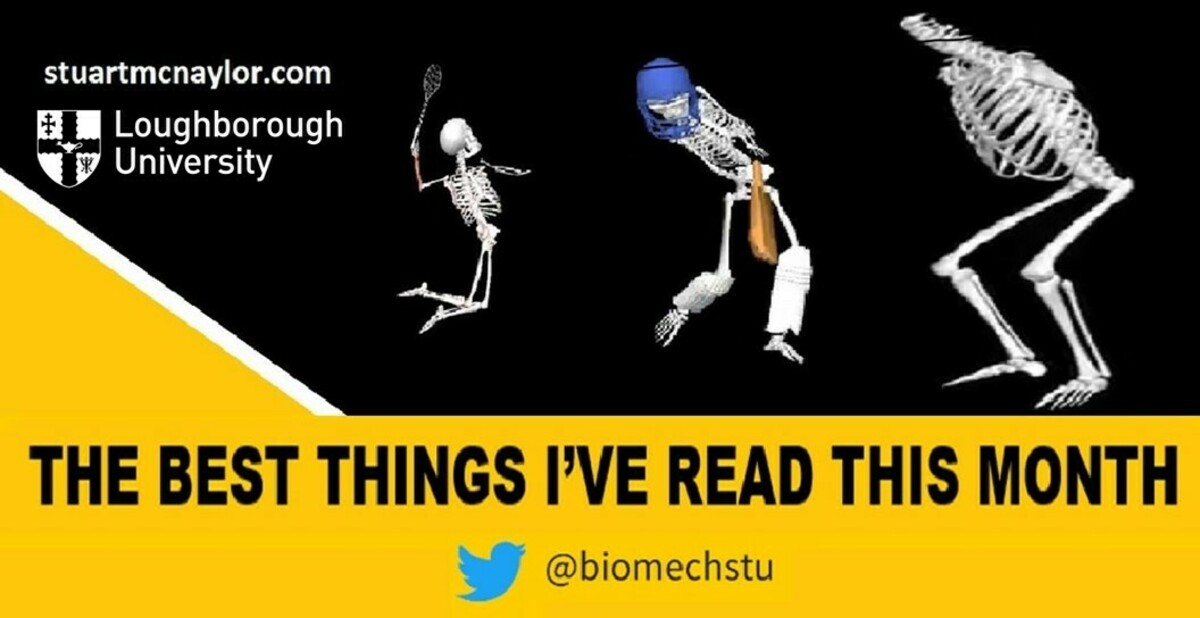
Welcome to my monthly update.
Here’s what I would like to share with you this month…
What Have I Been Up To?
Cricket Batting Study
Do male and female cricketers use different power hitting techniques? To answer this, we tested 15 male and 15 female players ranging from university academy to senior internationals. The study was recently published in Journal of Sports Sciences. You can watch a 3-minute video overview below, read a short Twitter thread summary , or read the full Open Access article .
Biomechanics Meets Strength and Conditioning
I’m assisting my colleague Marco Beato as Guest Editor for a Sports Special Issue on “Strength and Conditioning and Biomechanics for Sports”. The deadline for submissions is 28th February 2022. Please get in touch if you have any queries.
Upcoming ISB Presentation
I will be presenting at the International Society of Biomechanics congress on Thurs 29th June. My presentation, titled “Inter-individual Variation in Coordination and Control of Countermovement Jumps” is part of the “OH8 - Motor Control” session beginning at 11:45 CEST.
What Have I Been Reading?
Now for the main part of the newsletter…
Bar Charts and Box Plots
This article provides a visual comparison of the different types of bar charts and box plots, including the advantages and disadvantages of each. Spoiler alert: it depends on the comparison you want to display: it’s difficult to compare categories in pie chart; stacked bar charts are good for comparing overall values; layered bar charts are good for comparing within categories; and grouped bar charts are good for comparing across categories.
How To Justify an Alpha (Not Necessarily 0.05)
A really well written preprint describes the different ways you can justify the alpha in statistical analyses (no, it doesn’t have to be 0.05). Did you know, with high sample sizes certain p-values below alpha can be more likely under a true null hypothesis than under a true alternative hypothesis?
How to Respond to Reviewer Comments
Timehop reminded me of this excellent Twitter thread , providing detailed advice on how best to respond to peer-reviewer comments during the publication process.
Data Visualisation Using R, For Researchers Who Don’t Use R
This preprint offers a practical and pragmatic introduction to data visualisation in R, with visual examples so you can play along at home. There is no requirement for prior experience in R.
Designing Better Figures
Speaking of data visualisation, I got a lot from this BioRender webinar . They presented some key principles and worked examples, with topics including the viewing order, use of text, white space, alignment, colour schemes, and the use of arrows.
Biomechanics Teaching and Learning Resources
This resource provides a comprehensive list of research articles related to the teaching and learning of biomechanical concepts. It’s great to see my article on “experiences of undergraduates publishing biomechanics research” within there.
Thank You
That’s all for this month. If you found it useful, please forward this email or share this link with friends, colleagues, or on social media.
What Have You Read Recently?
If you’ve read anything particularly interesting or useful recently, please reply to this email and let me know. I read all of the replies and I’m always looking for good reading suggestions.
Take care, and thank you for reading.
Stuart